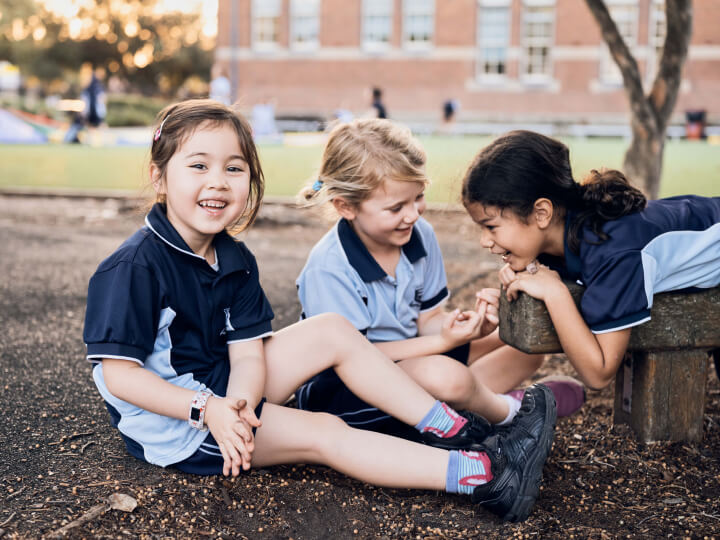Key Points
- The Connect, Promote, Protect Program is an innovative Outside School Hours Care Program that builds personal and community connections for primary school children.
- This program has been developed through a partnership between The University of Sydney’s Brain and Mind Centre and Uniting Early Learning.
- The Connect, Promote, Protect Program (CP3) involves a co-design approach to research that aims to forge strong relationships and connections with children, families, educators, and communities.
At Gowrie NSW OSHC Seminar Day this April, Kristin Ballesteros and Zelalem Mengesha are speaking about the Connect, Promote, Protect Program – an innovative Outside School Hours Care Program that builds personal and community connections for primary school children.
Jessica Horne-Kennedy asked Kristin some questions about this program.
Your Career Starts Here - Work at Gowrie
Can you share a little about who you are, your role at Uniting and how this research approach first emerged?
Hi, my name is Kristin Ballesteros. Firstly, I’m a parent to 2 bustling children in the middle years, so I’m a huge OSHC supporter and enthusiast! I’m someone who really enjoys project work and innovation with a strong interest in mental health: specifically, how best to support children during their formative years.
My role at Uniting has been coordinating the CP3 program- a social innovation project. I’ve been working closely with Uniting’s Early Learning team (OSHC operations) and supporting the ongoing research partnership with The University of Sydney’s Brain and Mind Centre.
It was a little over 5 years ago that Uniting partnered with The University of Sydney. We held a joint vision and dedication to exploring new ways to support children’s well-being in the often “missed middle” years. With the pairing of USYD’s mental health research expertise and Uniting Early Learning’s commitment to children, the CP3 team has been able to discover and test the very first OSHC specific well-being program. From here, our partnership and the CP3 program has grown.
This research project has been undertaken in partnership with the University of Sydney Brain and Mind Centre. For OSHC services interested in partnering with a university for research what would you recommend as the first steps to take?
I think OSHC services need to do a brainstorm of ‘what they would like to achieve’ by partnering with universities It’s very helpful to know what questions you would like to have answered, and what you’ll do with the answers. Some background research to identify academic researchers (and their universities) who have worked with OSHC services would follow. Almost all universities have research programs in the early learning and development spaces but only a few have experience in OSHC research and interventions. Finally, services can select the university that best fits the scoped purpose and reach out to the respective researchers. The answer from universities will almost certainly be “yes, happy to partner with you”. The reason is that there is a lot of encouragement from the academic space to increase partnership with industries and uptake of research outputs/recommendations.
The CP3 program has been fortunate to have the combined research support of both Dr Alyssa Milton (USYD, Brain and Mind Centre) as well as Dr Zelalem Mengesha (Uniting, Principal Researcher). For Uniting, having an in-house research and social impact team, has meant the research partnership and processes are both strongly resourced and supported. 
This project is described as having a co-design approach – can you describe what this means and how this has involved children in your OSHC programs
Co-design is exactly what it suggests. It’s a type of design process that is all about getting together, collaborating, and involving all stakeholders. In particular, it means working authentically and as equals with people who usually don’t get a say in how services are designed.
Even way back in its infancy, the CP3 team ensured the end users were placed at the centre of the program design. This is because, and we have learnt first-hand, that end user’s (the children, families, educators) are always the experts of their own experiences and needs.
For the children at Uniting, supporting them to co-design their very own ultimate CP3 activity often resulted in a lot of hype and enthusiasm! There were voting stations, activity workshops, stickers, lucky dips, and an ongoing cycle of activity feedback. This was all very appealing to the children. And whilst the children were busy focusing on the activity itself, the Educators and skilled Volunteers went about using a CP3 lens to engage the children, support well-being and uncover links to their local community.
I believe the magic of CP3 lies in this co-design approach. It’s an approach that supports all that CP3 is. That is, it’s a program aiming to forge strong relationships and connections through co-designing with children, families, educators and communities.
Check Out the Current Job Opening at Gowrie
What have been some of the key benefits of this research that other OSHC services could implement or try?
The implementation of an outcome’s measurement tool, The Strengths and Difficulties Tool, was useful to generate objective evidence to monitor mental health outcomes of the children and benefits associated with CP3 and OSHC programming. We feel that the use of the tool could influence OSHC services to start thinking beyond operational matters and focus on improving child well-being outcomes. The end benefit for all OSHC services is to have a well-developed evidence informed and adaptable program that supports children to build their mental health protective factors, equipping them as they move towards adolescence.
Ultimately we hope the research delivers not only an evidence informed program but it will also spark an interest and greater investment into the OSHC sector as a whole.
For the Seminar in April what are you looking forward to sharing with the group?
Without a doubt, what I’m most looking forward to is being in the room with everyone! Following in a close second place is to have the chance to showcase one of the many beautiful CP3 practice examples from Uniting’s OSHC services. Plus, I can’t wait to share service insights and what we’ve learnt about driving innovation, partnerships, as well as detailing the benefits and outcomes for children.
Register now for this enriching professional learning opportunity – especially for OSHC Educators.
We look forward to seeing you at this special event!
Find Your Next Role at Gowrie NSW
The Connect, Promote, Protect Program (CP3) is a wellbeing and social connection program for primary school children that leverages community infrastructure and is delivered through Outside School Hours Care. Over the past 5 years, CP3 has been trialed using research-based processes across Uniting’s OSHC services in partnership with local communities and The University of Sydney’s Brain and Mind Centre.




